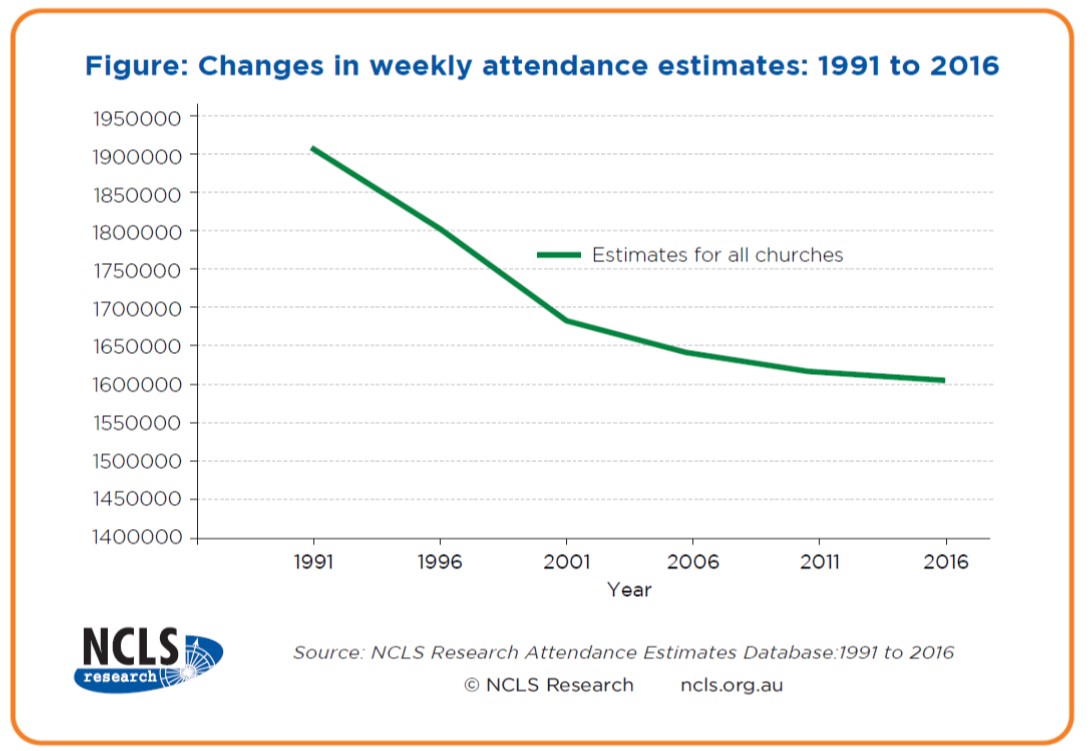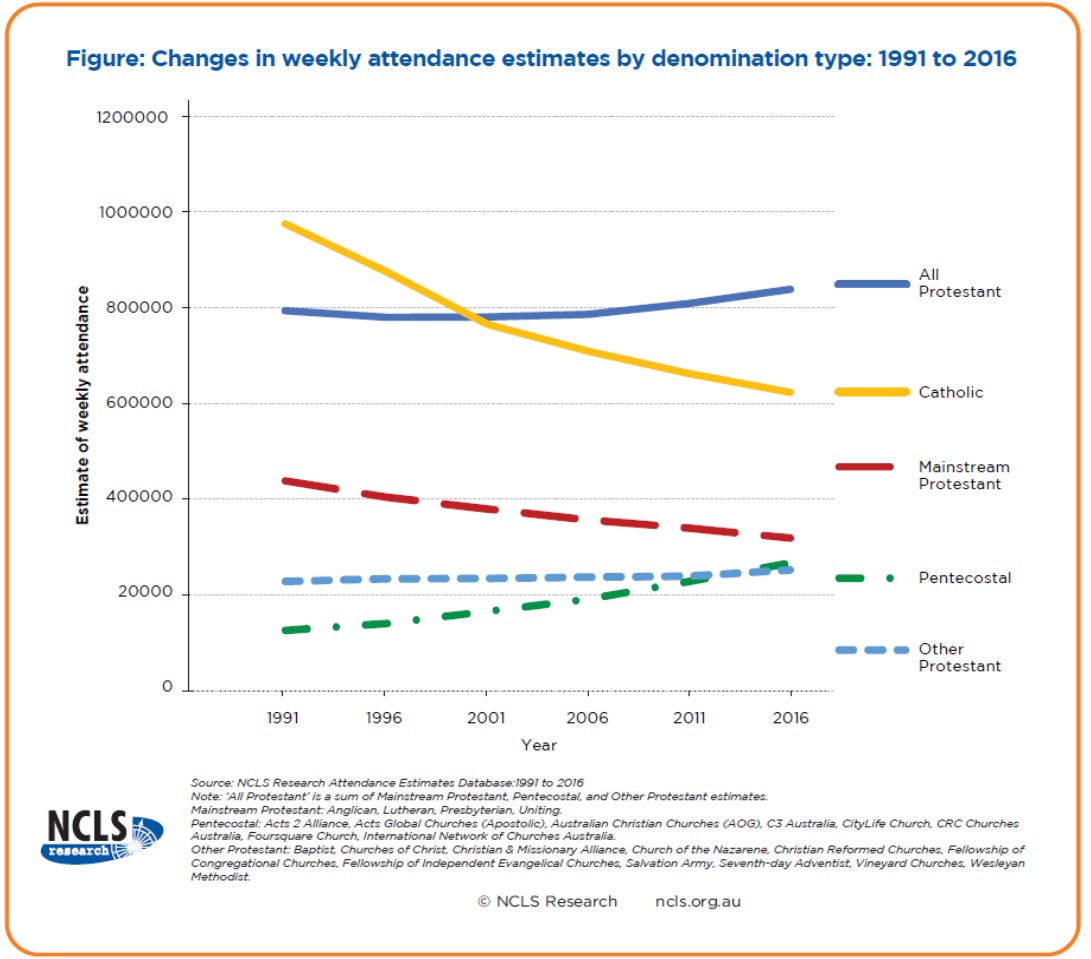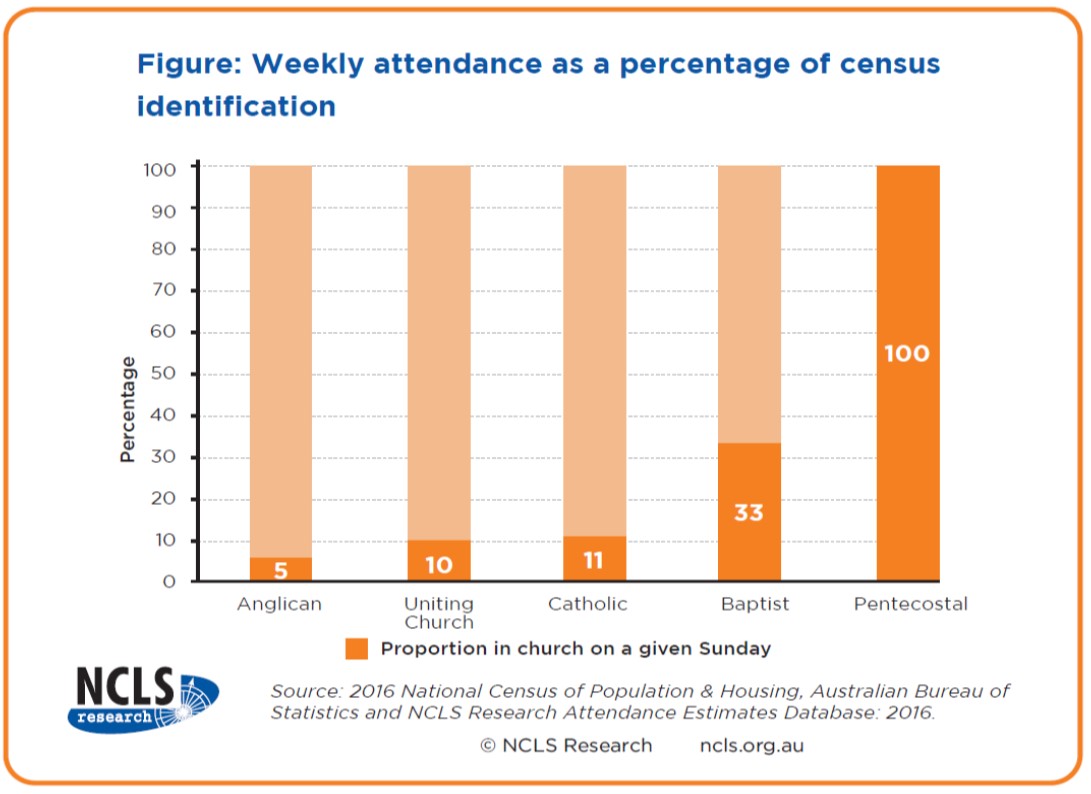Between 1.9 and 2.1 million Australians were at a church service within an average month, and around 1.6 million or 7% of Australians attended church in an average week, in 2016. While overall church attendance has declined over the past decades, there are signs of growth in recent years in Protestant churches, which are largely due to high growth of Pentecostal movements.
Decline in church attendance continues but has slowed
What do we know about changes in weekly church attendance over the period from 1991 to 2016? The NCLS Estimates of Attendance Database is far from complete and can only give an approximate picture of changes. However, there is arguably no better source available at this point in history for Australian church life.
It has been well documented that there has been a decline in weekly church attendance in recent decades. This aligns with the decline in religious affiliation recorded by the National Census and the self-reported attendance from sample surveys.
The decline is shown in the Figure below, with a steep drop in the decade from 1991 to 2001. A slowing in the rate of decline is seen however, from around 2001.

While we are only working with estimates from many denominations, the current best ‘guestimate' of weekly church attendance in 2016 is only slightly lower than in 2011.
Therefore, the overall size of the church in Australia may be plateauing for the moment, although given the age profile of the churchgoing population we expect to see further decline in coming years.
Denominations have different growth patterns: 1991 to 2016
The study of weekly estimates of attendance has found that denominations have had quite differing growth patterns over the 25 year period.
If we simplify the picture by grouping denominations into four types, then some key points emerge:
- Attendance in the Catholic Church and in Mainstream Protestant churches declined in the period from 1991 to 2016.
- When all Protestant churches are taken as a single group, there has been little change to weekly attendance levels over the 25 years, with some signs of growth in recent years. In 2016 there were more church attenders on a weekly basis at Protestant churches than at Catholic parishes.
- The net result of stability or slight growth over time for Protestant churches masks the decline in mainstream churches which has been offset by significant growth among Pentecostal movements (who doubled in size in the period).

Attendance as a percentage of Census identification
The proportion of people claiming to identify with a Christian denomination dropped from 71% in the 1996 Census to 52% in the 2016 Census.

What proportion of these people actually attend church frequently? The answer varies significantly from one denomination to another.
Attendance rates in larger denominations such as Anglican (5%), Uniting (10%) and Catholic (11%) are a small proportion of the overall number of people identifying with them.
By comparison, other Protestant denominations such as the Baptist Church (33%) tend to have much higher proportions attending. Pentecostal attendance estimates actually exceed Pentecostal affiliation figures from the National Census (102%).
The proportion attending for each of these denominations has not changed much from the picture found in the 2001 Census.
Overall, according to results from the Australian Bureau of Statistics and NCLS Research, there are signs of resilience and even some growth in Christian Church attendance.



